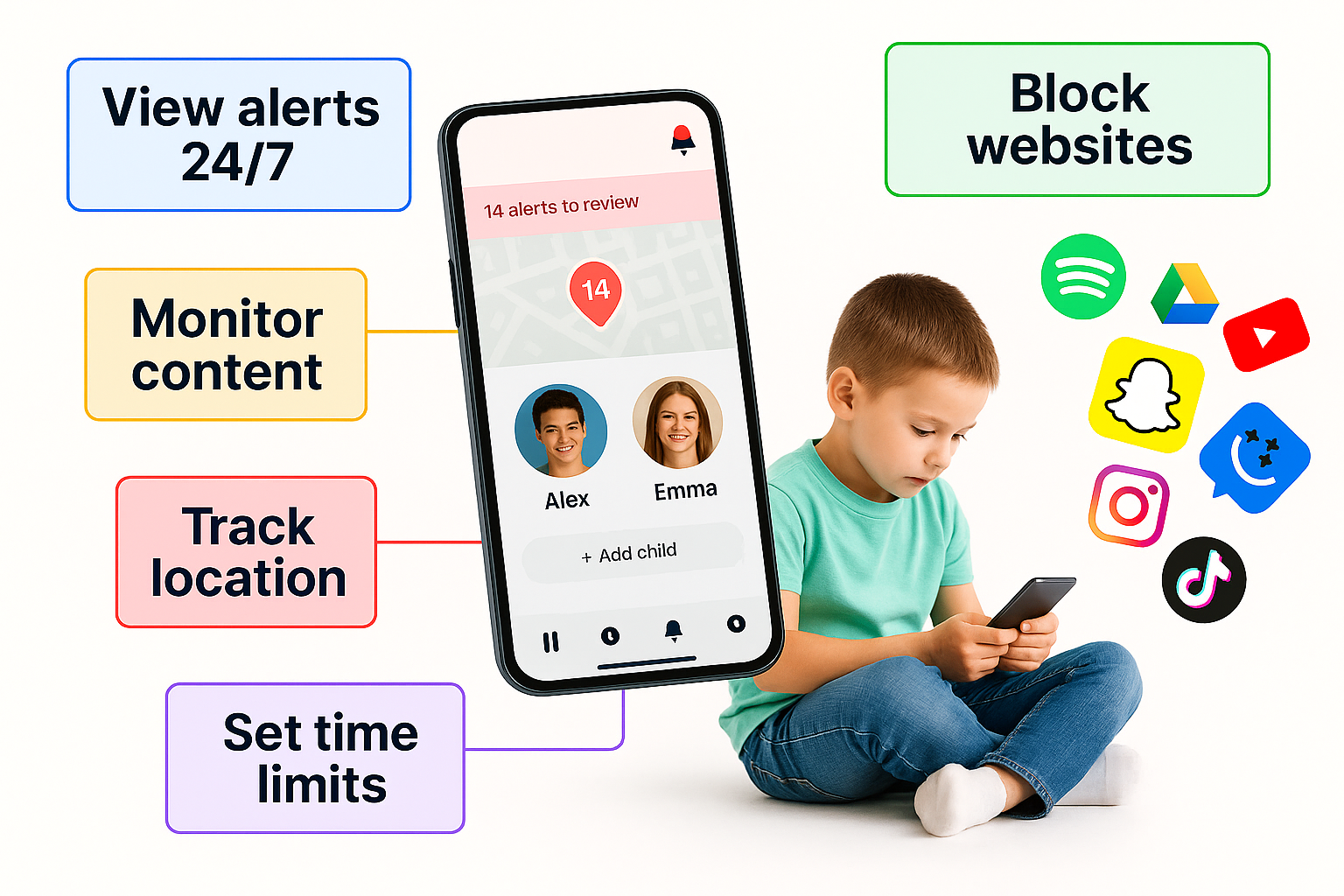How One Phone Rule Changed Our Week: A Real Parent’s Experiment
The Trouble We Were In
We knew something had to give.
Our 12‑year‑old daughter, Emma, had her smartphone for less than a year—and yet, our home felt stranger. Dinners became quiet. Her laugh, once frequent, faded. Her phone’s glow seemed less about connection and more about escape.
We tried rules: “No phone during homework.” “Phone off at 9pm.” “Only approved apps.”
But the fights kept coming: “Just five more minutes.” The same argument, over and over. We were tired. She was distant. We lost our rhythm.
One Friday evening I said something that surprised me: “What if we just pause the phone for a week—except for emergencies?”
Her face went from resistant to curious. We were scared. But we were also ready.
Setting the Rule: Clear, Fair, Firm
We announced three clear conditions:
- Phones off between 8 pm and 8 am. In those hours mobile devices were turned in and charged in the living‑room.
- Daytime usage permitted only for calls/texts or approved educational apps. No games, no social media.
- Weekly family check‑in each Sunday evening. We’d talk about how phones felt, what we missed, what surprised us.
We committed to it together—no silent rule book. We printed it, stuck it on the fridge. Emma chose one fun wallpaper for her phone and one reward: after the week, if all rules had been followed, she could pick a new app within our approved list.
Day 1‑2: Pull‑Back & Pushback
The first two days were turbulent.
Emma looked at her phone like it betrayed her. She slept later. Woke up grumpy. Asked for games. We stood firm.
Dinner that night: she kept looking toward her phone’s charging spot. Her little sighs were loud.
But something changed by Day 2 afternoon: instead of grabbing the phone after school, she asked if we could go for a walk. Unexpected.
The silence was there—but now it had another texture: a pause. Not absence.
Day 3‑5: Small Wins, Bigger Changes
By Day 3, we noticed shifts:
- She took out her sketchbook again.
- She asked to help bake cookies.
- We had a spontaneous “family board game night.” Her phone sat silent on the counter.
Her mood lightened. She laughed without headphones. She told jokes at dinner.
And then: her sleep improved. The next morning she climbed out of bed without us coaxing.
A turning point: On Day 5, she said to us without prompting: “Can I keep texting my friend about the science project tomorrow?”
She didn’t ask “Can I use my phone?” She asked about a conversation. That felt huge.
Day 6‑7: Reflection, Real Talk
We arrived at Sunday’s check‑in and we asked, “How did this week feel?”
She answered:
“I realised I miss my phone less when I’m doing other things. And I’m kinda okay with that.”
Her expression said it too. Serious. Calm. Genuine.
We discussed:
- What she enjoyed: being more present, reading in the car, helping in the kitchen.
- What she missed: late‑night chats with friends, random videos.
- Her next goal: Earn back 30 minutes of weekend games if she maintained the daylight rules for next week.
We also shared our own reflections:
- We, as parents, felt more connected. She listened. We listened.
- The dinners felt warm again. The shared car rides were talk‑filled.
- Our rule felt like support, not control. That shift mattered.
What We Learned (And You Can Use Tomorrow)
- Structure builds trust: Clear, visible rules let kids know you’re caring, not controlling.
- Freedom through limits: Phones didn’t vanish—they transformed. We allowed essential use but stopped the runaway.
- Value the offline shift: What replaced the phone wasn’t silence—it was engagement. The world opened again.
- Involve the child in the process: Emma picked the wallpaper, chose the reward, helped set the check‑in. She had ownership.
- Reflection matters: One weekly talk changed the way we treated the phone. It was about feelings, not just apps.
- Progress is better than perfection: We didn’t aim for zero phone use. We aimed for better habits. That made it realistic.
Tips If You Want to Try This Experiment
- Print the rule sheet and let your child add one fun thing (wallpaper, ringtone, movie pick).
- Set a start date (e.g., “This Friday we start at 8 pm”) so it feels like a launch.
- Choose three clear boundaries (bedtime off, approved apps only, weekly check‑in).
- Schedule a family reward after the week—something fun, camera‑free like a hike, picnic, or game night.
- Make the check‑in mandatory: driver for improvement, not threat. Ask honest questions, listen first.
- After the week, reassess: What rules can stay? What needs change? Celebrate wins.
Conclusion: A Phone Rule Wasn’t the Hardest Part—The Hardest Was Being Willing to Try
We handed our daughter a phone months ago. What we didn’t hand her was the framework. This week’s rule didn’t remove the phone—it reshaped its role.
Our home didn’t become screen‑free. It became more present. More connected.
If you’re stuck in phone skirmishes, fights, silent dinners or lost rituals—consider this experiment. A week might feel long. But when it ends, you might be surprised how much changed.
Phones aren’t the problem—how we integrate them is.
Try the experiment. See what shifts. A better tech‑life balance might be just a phone rule away.

